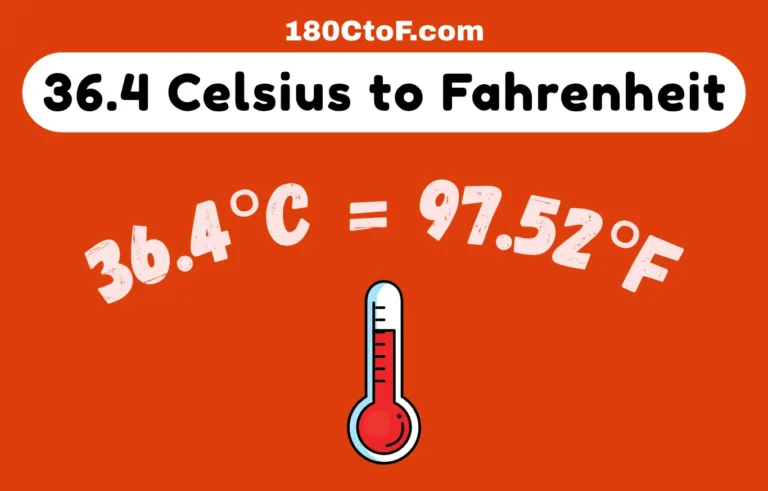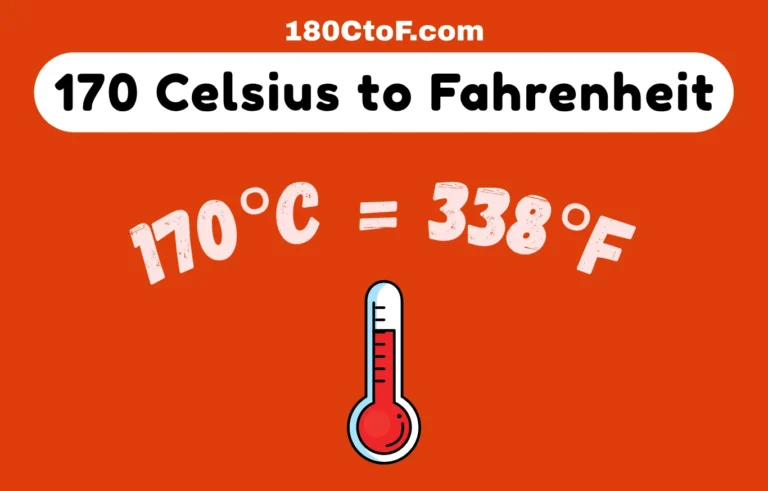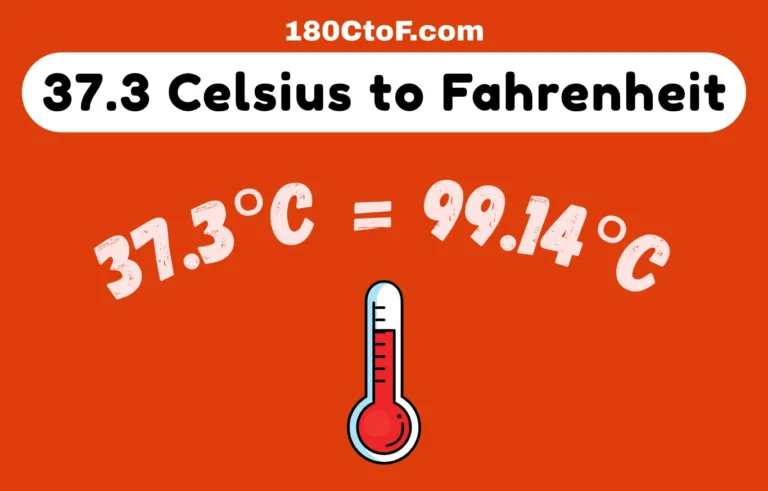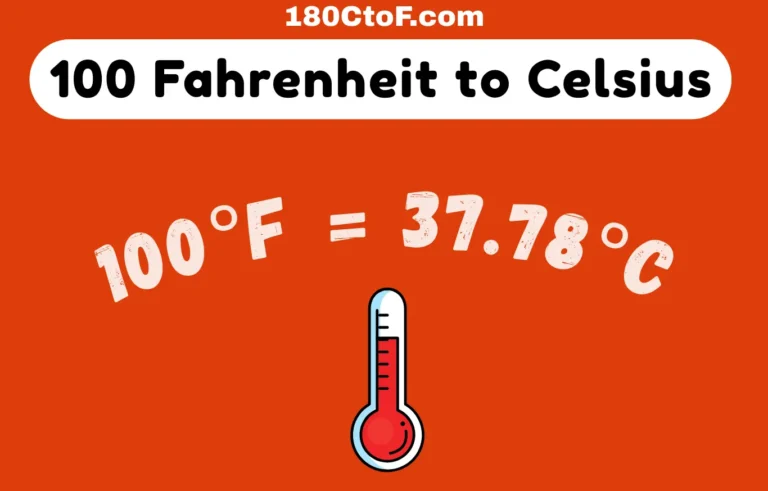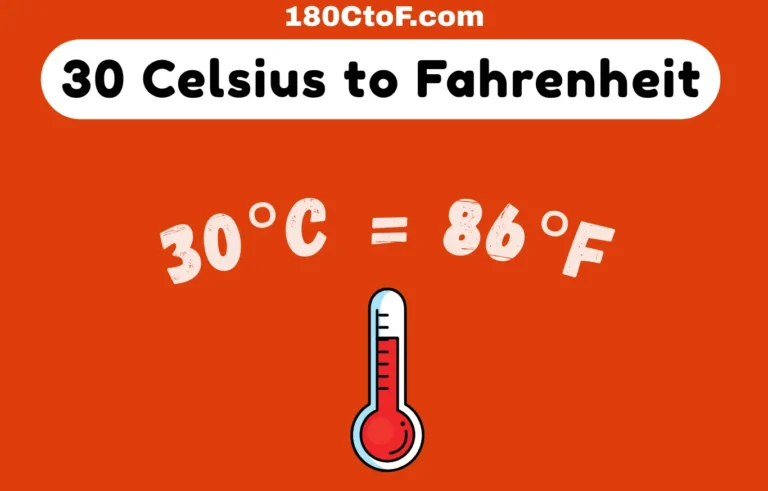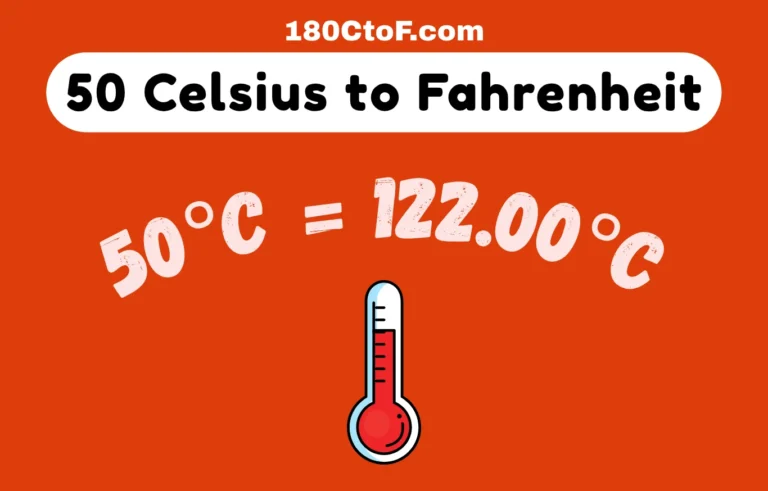37.8°C to °F – Convert 37.8 Celsius to Fahrenheit Easily
Many people get confused when switching between Celsius and Fahrenheit. Whether you’re checking a fever, reading a weather report, or following a recipe, converting Celsius to Fahrenheit can be confusing if you’re not used to it In this article, we will explain what 37.8°C is in Fahrenheit and show you how to convert temperatures yourself easily.
Convert 37.8 Celsius to Fahrenheit with this converter tool
Whether you’re checking the weather, cooking instructions, or a fever reading, this tool helps you quickly convert temperatures from Celsius (°C) to Fahrenheit (°F). It gives you quick and accurate results.
- You just enter a 37.8 °C temperature into the input box.
- The tool will automatically show the result in Fahrenheit.
- e.g. 37.8°C = 100.04°F
To understand the full process of converting Celsius to Fahrenheit, you can visit our comprehensive Celsius to Fahrenheit conversion guide.
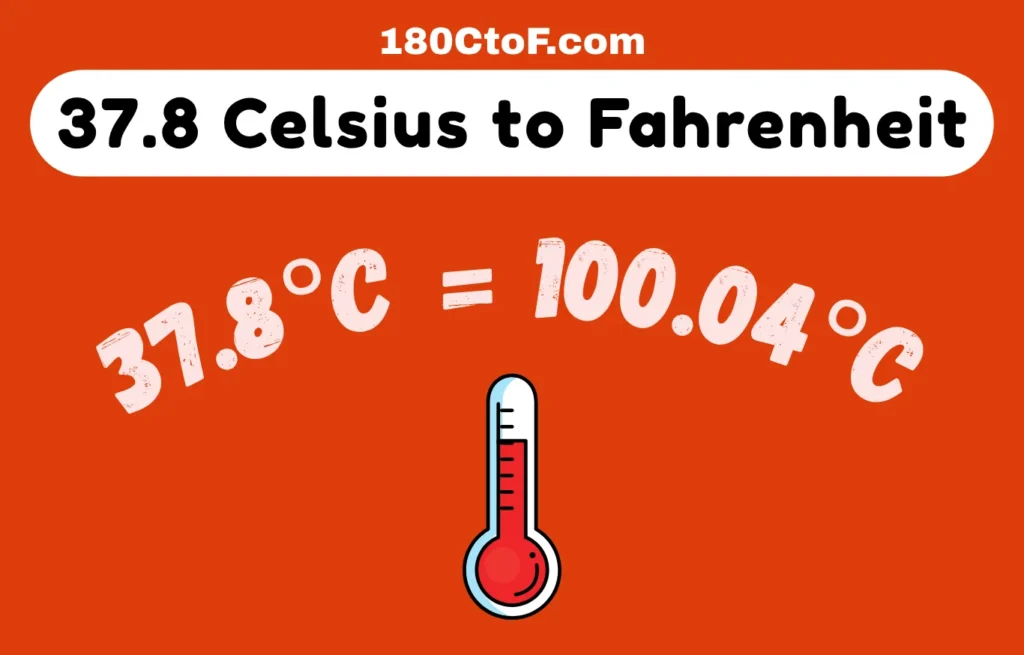
Easy Formula to Convert 37.8 °C to °F
This formula is used to convert any Celsius temperature to Fahrenheit.
Use the formula:
- °F = (°C × 9/5) + 32
- 37.8 × 9 = 340.2
- 340.2 ÷ 5 = 68.04
Add 32 to 68.04
- 68.04 + 32 = 100.04
Thus, 37.8°C = 100.04°F
Example 1: Convert 25°C to Fahrenheit
- Start with the formula: °F = (°C × 9/5) + 32
- 25 × 9 = 225
- 225 ÷ 5 = 45
- 45 + 32 = 77
- So, 25°C = 77°F
If you’re working with different temperature values, feel free to explore more conversion tools on our 180°C to °F page.
37.8 Celsius to Fahrenheit Conversion Table
The main advantage of this table is that you can instantly determine the meaning of a temperature without needing a converter tool. Understand body temperature 37.8°C (100.04°F), which indicates a mild fever or illness. It saves time, avoids math errors, and helps people from different parts of the world to understand temperature in a format that is relevant to them. Wondering how close 37.8°C is to normal body temperature? Take a look at the conversion for 37°C to Fahrenheit, a commonly referenced medical benchmark.
Celsius (°C)
Fahrenheit (°F)
Description
35.0°C
95.0°F
Below normal body temperature
36.0°C
96.8°F
within normal range
37.0°C
98.6°F
Normal body temperature for most adults
37.5°C
99.5°F
Low-grade fever
37.8°C
100.04°F
Mild fever may indicate infection or inflammation
38.0°C
100.4°F
Fever
38.5°C
101.3°F
Moderate fever
39.0°C
102.2°F
High fever
40.0°C
104.0°F
Very high fever
Is 37.8°C a Fever in Fahrenheit?
When you convert 37.8°C to °F, the result is 100.04°F. This temperature is slightly higher than the normal body temperature of 98.6°F, which may indicate that your body is dealing with an infection, such as a cold or flu. It’s usually nothing to worry about, but if any other symptoms appear, it’s smart to monitor how long the fever lasts. If the temperature rises or fails to improve, consult a healthcare professional. For context on milder climates, compare it with 30 degrees Celsius in Fahrenheit, which is often seen during warm summer days.
37.8°C to °F: Understanding Fever in Kids and Adults
37.8°C to Fahrenheit, it equals 100.04°F, which is identified as a low-grade fever in both children and adults. While it’s not usually a serious issue, this temperature can be an early indication that your body is fighting an infection.
In adults, it simply means your immune system is responding. In children, even a low-grade fever should be monitored more closely, as their immune system is more sensitive. Understanding what this temperature means helps you take the proper steps, whether it’s rest or a quick call to the doctor. So, you don’t usually need to rush to the doctor immediately, but you should stay alert and seek medical attention if the fever doesn’t improve. Since 37.8°C is often associated with low-grade fever, it’s helpful to also review 37.5°C in Fahrenheit for nearby temperature points.
37.8 Celsius to Fahrenheit: Symptoms, Causes, and Treatment
A body temperature of 37.8°C is approximately 100.04°F, which is likely a low-grade fever in both adults and children.
Common symptoms
that appear with this temperature include
- fatigue
- Headache
- muscle pain
- Mild chills or shivering
- Sweating
- loss of appetite
- General discomfort or restlessness
- In children, it can also be linked to teething or a recent vaccination.
Causes
- Viral infections
- Bacterial infections
- Post-vaccine reaction
- Teething (in babies and toddlers)
- Mild inflammatory response
- Early stages of illness, including COVID-19 or seasonal flu
Advice
However, if the fever lasts more than 48–72 hours, or if you experience seizures, rashes, breathing issues, or extreme fatigue, and the fever exceeds 38.5°C (101.3°F), it’s best to consult a doctor. If you’re tracking a wide range of temperatures, you might want to check how 25°C converts, a temperature typically associated with room comfort.
Frequently Asked Questions (FAQs)

Heather M. Archambault
Heather M. Archambault, PhD, is a meteorologist and research scientist with decades of experience in atmospheric science and climate modeling. As the founder of 180 C to F, she brings scientific accuracy to every temperature conversion tool and guide. Her mission is to make complex temperature concepts clear and accessible to all.

